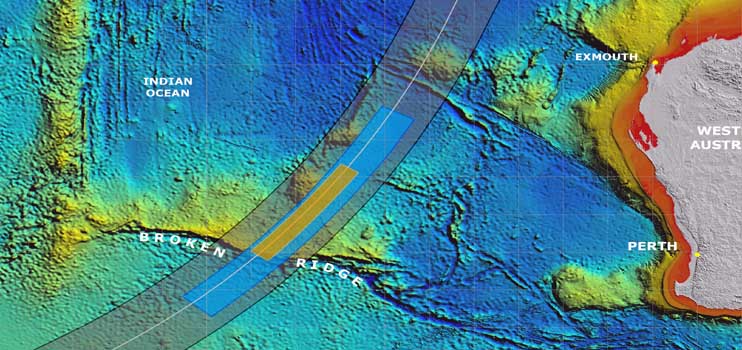MH370; New Search Confirmed
25 June, 2014
2 min read
By joining our newsletter, you agree to our Privacy Policy


What is the most complex and costly search in aviation history is set to resume in a new area in the Indian Ocean further south after the operation to find MH370 was suspended late last month.
As first revealed by AirlineRatings.com last week the search for MH370, which disappeared on March 8, with 239 passengers and crew will be in a 60,000 square kilometers zone in an area previously searched in late March.
The search area is 1900km due west of Perth and is 650km long by 93 kms wide.
Yesterday Deputy Prime Minister Warren Truss said that investigators from the US, U.K. and Australia and representatives of Boeing, and Inmarsat analysed satellite and plane data to define an area with the highest probability of finding the missing aircraft after operations were put on hold May 28.
AirlineRatings.com understands that there were four independent groups formed and all came up with the same search area.
Australia’s crash investigator –the Australian Transport Safety Bureau - which is leading the search said that “refinements to the analysis of both the flight and satellite data have been continuous since the loss of MH370.”
Backing up the shift in search ATSB yesterday issued a comprehensive 64-page report detailing its analysis.
The revised search area was the subject of a surface search from day 21-26 in late March.
However, erroneous intelligence from Malaysia sent the searchers further north where apparent black box pings were detected.
The first stage of the new search involves the Chinese naval ship Zhu Kezhen and the MV Fugro Equator which are now mapping 60,000 square kilometers of the sea bed.
That mapping is essential before a deep sea towed side scan sonar operation is undertaken.
The mapping ships use multi beam sonar, which is capable of collecting high quality data to water depths of up to 6,000 m.
Multibeam sonar is a common offshore surveying tool that uses multiple sound signals to detect the seafloor.
The Australia’s government is receiving bids from private companies by the end of June for this deep-sea search that will start in August and could take as long as a year.
Aim of the search is to locate the aircraft and any crucial evidence such as aircraft wreckage and flight recorders to assist with the Malaysian investigation.
As part of the search, the ATSB will contract experts to localise, positively identify and map the debris field of MH370 using specialist equipment.
Next Article
Virgin gets nod for Tiger deal

Get the latest news and updates straight to your inbox
No spam, no hassle, no fuss, just airline news direct to you.
By joining our newsletter, you agree to our Privacy Policy
Find us on social media
Comments
No comments yet, be the first to write one.

